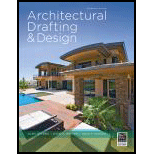
Concept explainers
The three important areas of home.
Explanation of Solution
The three important areas of home are living room, bedroom and dining room.
Living room
It consists of the living, nook areas, dining, family and den areas. These are the rooms or areas of a house where friends and family will spend most of their leisure time. The rooms in the living area should be clustered together near the entry to allow easy access for guests. Points to consider during planning the living room include how often the room will be used, how many people are going to use it. The type and size of the furniture that will be placed in the living room. Some families use the living room as a place for quiet conversation and depend on other living areas for noisier activities.
Bedroom:
The arrangement of bedrooms greatly varies depending on the family's needs. Common arrangements include placing the master bedroom separate from the bedrooms, for children or placing all the bedrooms together. It is also common in custom homes to plan a bedroom living unit for long term care of live-in relatives. Bedrooms are normally located with access from a hallway for privacy from living areas and should be near to the bathrooms.
Dining room:
Dining areas, depending on the size and atmosphere of the residence. The dining area is often part of or adjoins, the living area. For a more formal eating environment, the dining area will be near but separate from the living room area. The two areas are usually adjoining so that guests may go easily from one area to the other without passing through other areas of the house. A casual dining room can be as small as
Want to see more full solutions like this?
Chapter 10 Solutions
Architectural Drafting and Design (MindTap Course List)
- Directions: Answer the following questions with short, complete statements or drawings as needed on an 81/211 sheet of notebook paper or complete the electronic chapter test on the Student Companion Website. 1. Letter your name, Chapter 10 Test, and the date at the top of the sheet. 2. Letter the question number and provide the answer. You do not need to write out the question. Answers may be prepared electronically if course guidelines allow it. 3. Answers should be based on the code that governs your area, unless otherwise noted. What rooms should the kitchen be near? Why?arrow_forwardDirections: Answer the following questions with short, complete statements or drawings as needed on an 81/211 sheet of notebook paper or complete the electronic chapter test on the Student Companion Website. 1. Letter your name, Chapter 10 Test, and the date at the top of the sheet. 2. Letter the question number and provide the answer. You do not need to write out the question. Answers may be prepared electronically if course guidelines allow it. 3. Answers should be based on the code that governs your area, unless otherwise noted. How much closet area should be provided for each bedroom?arrow_forwardDIRECTIONS: Answer the following questions with short, complete statements or drawings as needed on an 81/211 sheet of notebook paper or complete the electronic chapter test on the Student Companion Website. 1. Letter your name, Chapter 22 Test, and the date at the top of the sheet. 2. Letter the question number and provide the answer. You do not need to write out the question. 3. Answers should be based on the code that governs your area, unless otherwise noted. Sketch and define the difference between a hip and a Dutch hip roof.arrow_forward
- You will present a 4 minute informative speech to the class. Informative speech topic should be based on your civil engineering as bridges design and construction major. Use a minimum of 2 sources.arrow_forwardUse the table below to develop an AON schedule following the format that we used in class that are in your notes. Failure to use the scheduling method we went over in class will result in loss of points. The question for this part is to verify that you have determined the project duration correctly. Submit your answer to the question. If you get it correct you will receive a 10/10 for the quiz and you may move on to answering the quiz questions for AON Quiz 2. If you get it wrong, it will tell you it was incorrect, go back and reevaluate your schedule to determine any potential errors. If you still don't get it correct after the second try and would like to get my input, send me an email or setup a meeting with me in my office and we can discuss how to resolve it. Once you get it correct or once you have completed 3 attempts at answering it correctly, move on to Quiz 2. Task A C D E F G H I Preceded By: A B,C с D F G E,F Duration (days) 3 12 4 6 2 9 7 4 8arrow_forwarda. Identify the M222C Advance Math for CE course contents and how to achieve the stated purpose of this topic. b. The overall conclusion of this course.arrow_forward
- Answer remaining part of the questionarrow_forwardHello good day, I hope today has been kind to you. So I am having a problem answering this question and I need your help. Hoping for a response and thank you so much. Instruction: The answer must be in 2 paragraphs and each paragraph must have a minimum of 4 sentences. In addition, please indicate your source(s). Thank you so much. Question: Discuss the importance of following the correct method in collecting a drinking water for water potability testing.arrow_forwardAll values should not be rounded off until the final answer.arrow_forward
 Architectural Drafting and Design (MindTap Course...Civil EngineeringISBN:9781285165738Author:Alan Jefferis, David A. Madsen, David P. MadsenPublisher:Cengage Learning
Architectural Drafting and Design (MindTap Course...Civil EngineeringISBN:9781285165738Author:Alan Jefferis, David A. Madsen, David P. MadsenPublisher:Cengage Learning
